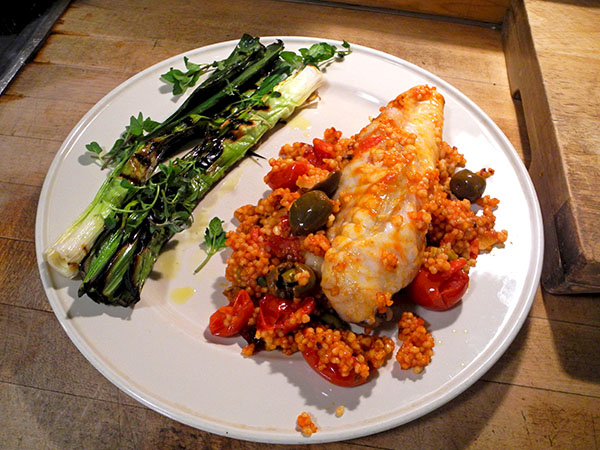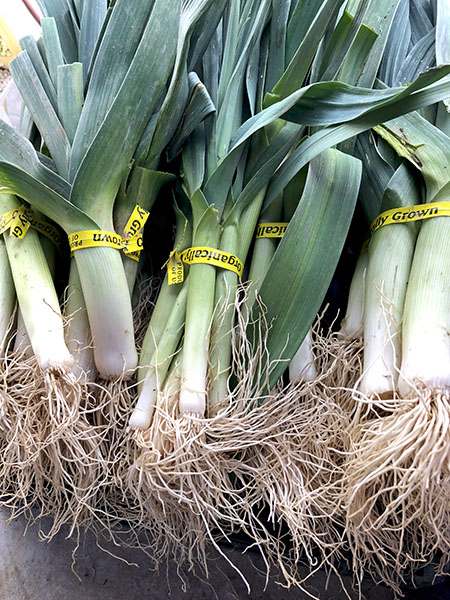
This is an extraordinarily good dish, and I’ve prepared it many times. I discovered the recipe long ago, in David Pasternack’s book, ‘The Young Man & the Sea‘, but I find it odd that to this day I’ve never been able to locate any mention of ‘inguazato‘ anywhere else on line (my own food posts discussing the dinners I’ve prepared using the recipe totally dominate the field).
Couscous is a pasta form that, if it didn’t actually originate in the Maghreb, until recently was a tradition almost nowhere else, except, in a small way, in Sicily (which makes perfect sense, considering that island’s history), and Egypt. In the last half century however it has become popular all around the Mediterranean, from Portugal and Spain, through France, Italy, Greece, Israel, and well beyond. Pasternack’s experience with it in Rome, which he alludes to in discussing his recipe, ‘Inguazato‘ in his book, may represent a modern novelty rather than a traditional dish, but I’d like to know more about it.
There was a vegetable accompaniment as well. Alternatively, I could have begun with an antipasto, letting the fish and the couscous stand alone in a second course, but each time I’ve prepared this dish I’ve always wanted to include a fresh and green element on the plate with the inguazato. For a while yesterday I was at a loss to come up with something I had that might work, but then I remembered the leeks I’d bought a while back that I had carefully stored in the crisper inside a plastic bag, with a damp paper towel around their roots.

- two 9-ounce monkfish tails from P.E. & D.D. Seafood, prepared using a reduced David Pasternack recipe using two thirds of a cup of M’hamsa Couscous from Tunisia (purchased at Whole Foods), olive oil, sliced Rocambole garlic from Keith’s Farm, one and a half 400-gram cans of really good Afeltra canned pomodorini from Eataly Flatiron and several kinds of cracked green olives I had on hand (ideally, they would be large green Sicilian olives) and 2 whole dried peperoncino Calabresi secchi from Buon Italia (rather than the fresh pepper indicated in the recipe)
- four medium leeks from Hawthorne Valley Farm, trimmed of their darkest green ends, cut in half lengthwise, washed vigorously in cold water to remove any earth while carefully holding the white ends together to keep them from falling apart (after I had started, I realized this could have been done more easily had I cut only part of the way down through their length, making ting them much easier), dried, then tied in 2 places along their length with kitchen string, rolled in a little olive oil, sea salt, and freshly ground black pepper, pan-grilled over a medium-hot flame for a few minutes, turning until all sides had been scored with grill marks and the leeks softened all the way through, arranged on the plates, the strings cut off with a kitchen shears, garnished with micro mint from Two Guys from Woodbridge
- the wine was an Italian (Tuscan) white, Fattoria Sardi Vermentino 2016, from Garnet Wines & Liquors
- the music was a magnificent performance of the 1774 Paris, French language, version of Gluck’s 1762 azione teatrale, ‘Orphée et Eurydice’, Jesús López-Cobos conducting the Coro y Orquesta Sinfónica de Madrid, with Juan Diego Florez, Ainhoa Garmendia, and Alessandra Marianelli